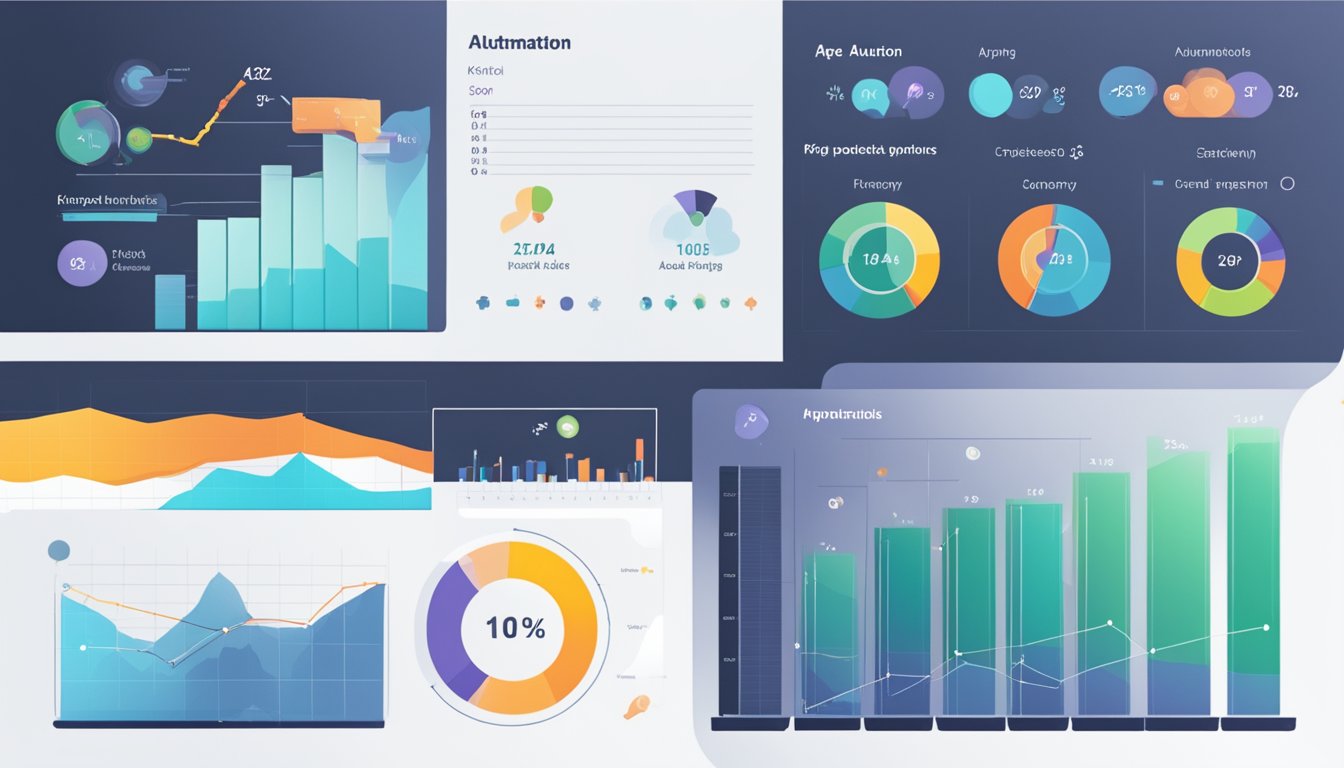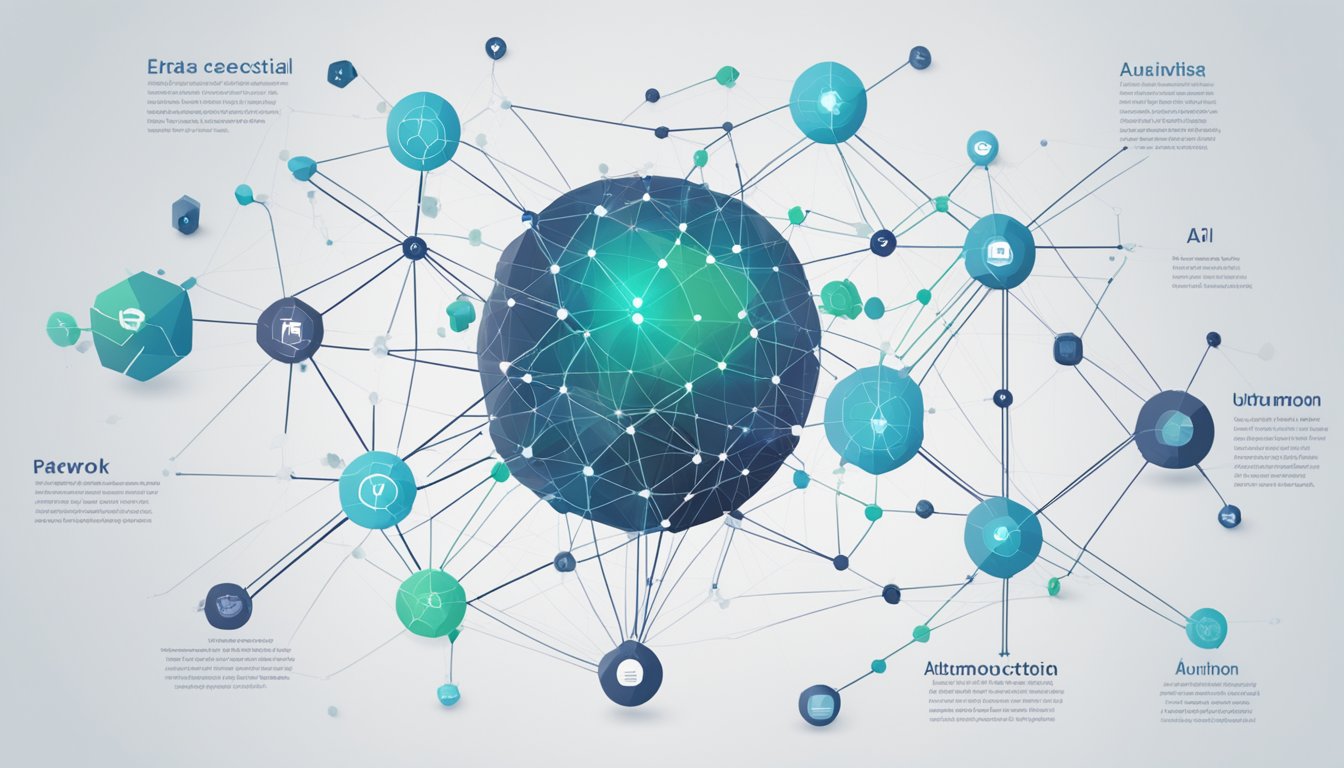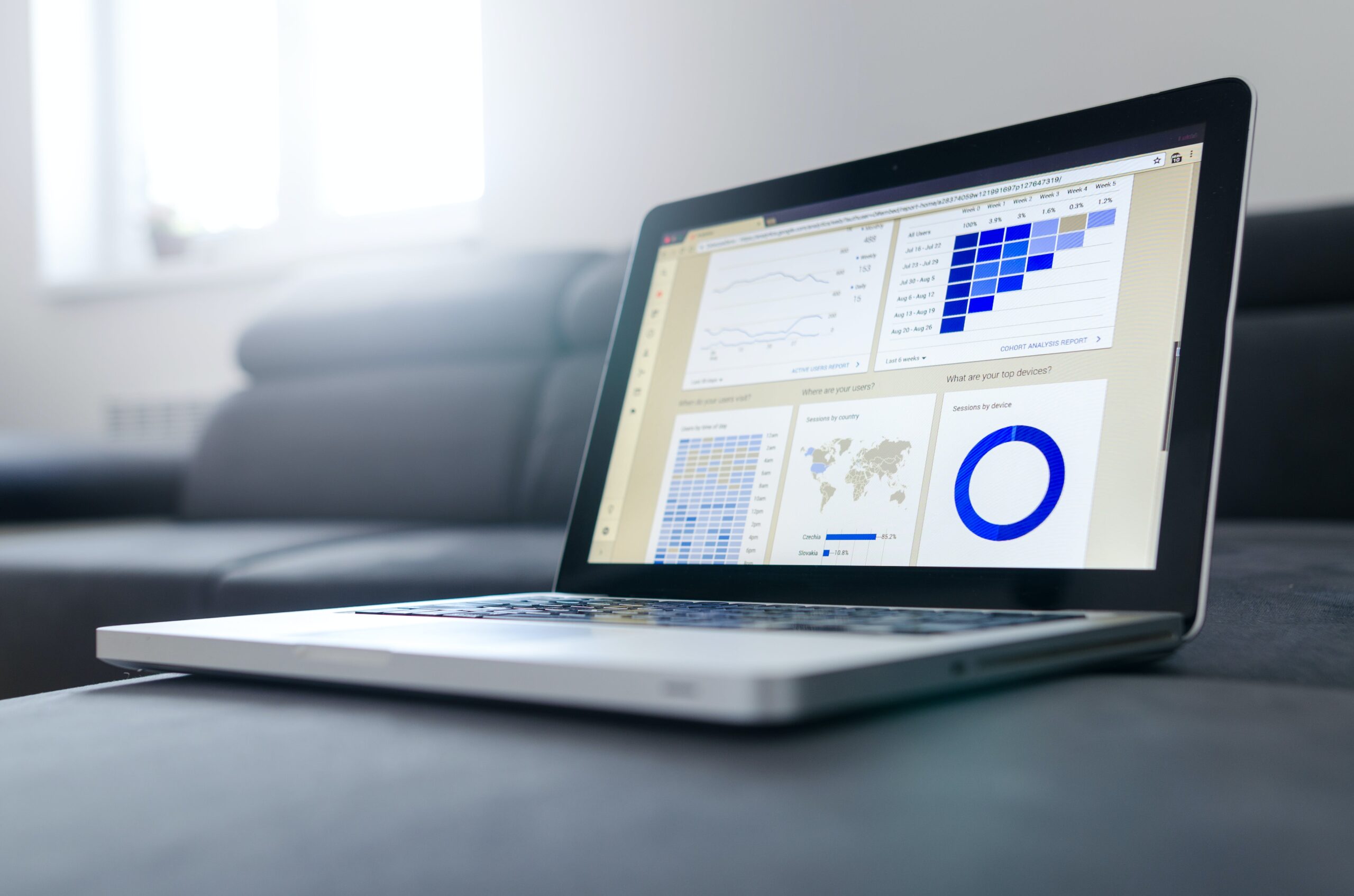Key Performance Indicators for AI Automation
Have you ever wondered how exactly you can measure the success of your AI automation efforts? Key Performance Indicators (KPIs) are the compass that guide businesses through the complex terrain of AI integration. They provide tangible benchmarks to track the progress and impact of your AI initiatives. Whether you’re just starting to implement AI in your operations or looking to optimize existing systems, understanding which KPIs to monitor can make all the difference.

But wait, what makes a good KPI for AI, and how does it align with your business strategy? Picture this: you have a goal to improve customer service response times. By setting a KPI for the average time your AI takes to resolve queries, you can track improvements and directly tie AI performance to customer satisfaction. It’s about choosing indicators that reflect the areas most crucial for your business outcomes.
Remember, it’s not just about the selection but also the application of these indicators. Keeping a close eye on performance indicators ensures that your AI doesn’t just run; it sprints towards your business goals. Imagine knowing that organizations leveraging AI-informed KPIs are up to 5 times more likely to see improved alignment between functions. That’s the kind of edge that can turn businesses into industry leaders. So, are you ready to set the stage for AI success with the right KPIs?
Understanding KPIs in AI Automation
Hey there! Ready to get savvy about how we measure success in AI? Let’s talk about KPIs and how they fit into the intricate world of AI automation.
Defining Key Performance Indicators
Ever wonder, “What’s a scoreboard for the digital game?” That’s where Key Performance Indicators (KPIs) come in—they’re the numbers that tell you if you’re winning in business and technology. In AI, they’re not just any metrics; they’re the ones that matter most for assessing how well your artificial intelligence systems are doing their thing.
The Role of AI in Performance Metrics
Now, how does AI change the game? AI brings a whole new level of smarts to what we can track and optimize. It’s like having a crystal ball that can predict outcomes and fine-tune operations to reach those high scores in your KPI dashboard. Companies use AI to go beyond traditional data analysis, allowing for real-time adjustments and forecasting that can propel business performance like never before.
Types of AI KPIs
Alright, let’s break it down. We’ve got different flavors of AI KPIs, each with its own special taste:
- Accuracy: How close is AI’s output to the gold standard? Nailing this KPI means your AI is on point!
- Efficiency: Speedy AI, anyone? When your AI is efficient, it gets the job done faster, saving time and dough.
- Adoption: This is all about how much your team loves your AI tools. High adoption rates? You’re doing something right!
- Return on Investment (ROI): The big question – is the cash you splashed on AI making bank?
Each of these KPIs gives you a peek into a different aspect of your AI’s health and helps you make tweaks and improvements. Just like in any part of life, keeping an eye on these scores can help you level up in the world of AI automation. Keep tracking, keep tweaking, and watch your systems soar!
Aligning AI KPIs with Business Objectives
Let’s get your AI efforts synced up with the real deal: your business objectives. This isn’t just about numbers; it’s about making sure your AI investment isn’t just smart, but also strategically savvy.
Strategic Alignment
Why align? Simple: AI should be your growth buddy, not just some fancy tech addition. Here’s the lowdown on getting AI and your core business strategy on the same page. First, pinpoint what your business is striving to achieve. Are we aiming for a revenue boost, better customer engagement, or perhaps supercharging operational efficiency?
Once that’s crystal clear, it’s time to craft KPIs that don’t just sit pretty but work hard. We’re talking KPIs that reflect how well AI initiatives are boosting those business goals. And hey, let’s not just shoot in the dark; tailor these AI KPIs to your company’s unique journey. Think of it as customizing the engine of a racecar—it’s gotta fit your track if you want to win the race.
Setting Measurable Goals
Now, let’s shift gears to measuring progress. Goals without measurable outcomes are like PB without the J—incomplete. So, you’ve aligned with the strategic vision, rolled up your sleeves, and you’re ready for action. But how do you know you’re actually getting somewhere? That’s where defining clear KPIs comes into play.
Implement KPIs tailored to your business’s heartbeat: it could be enhanced customer satisfaction rates, a dip in operational costs, or maybe an uptick in product quality. Whatever it is, these KPIs need to do two things: be quantifiable and directly aligned with your AI aspirations. Remember, this isn’t just about making AI work; it’s about making AI work for you—helping you hit those milestones with precision and moving the needle where it matters most.
So, you’ve got the plan and the ruler to measure your success—time to make AI transform those business objectives from a vision into reality!
Key Domains for AI-Driven KPIs

You’re probably wondering how exactly AI can elevate your business game. Well, let’s dive into the specific areas where AI-driven KPIs can significantly enhance your operations, focusing on customer satisfaction, HR efficiency, and crunching those ever-important financial numbers.
Boosting Customer Satisfaction
Ever felt thrilled when a brand seemed to read your mind? That’s AI at work! By harnessing AI, businesses are now able to fine-tune customer interactions, making sure every touchpoint is not just a transaction, but a positive experience. For instance, companies implementing AI to monitor and improve customer satisfaction often witness a measurable uptick in customer loyalty and retention rates.
Optimizing HR and Employee Performance
Imagine having a personal assistant that helps manage your workforce—a dream come true, right? AI-driven KPIs are like that assistant but way smarter and scalable. Through metrics like employee engagement scores and turnover rates, AI helps HR professionals manage and enhance employee performance. With tools capable of analyzing patterns and behaviors, making sure employees are not just content but in positions to thrive becomes easier, having a positive impact on your return on investment (ROI).
Financial Metrics for Business Growth
When it comes to business growth, being good with numbers is great, but being precise with them? Even better. Whether it’s reducing operational costs or increasing ROI, AI-driven KPIs bring a new level of precision to finance departments. By using smart KPIs, your finance team can make predictions and decisions that drive substantial business growth, letting you rest easy knowing that your financial health is not just in good hands, but in the best algorithms.
So, how does that sound for a future-forward approach? AI-driven KPIs are not just buzzwords—they’re real tools at your disposal to make your business smarter and your customers happier. Now, who wouldn’t want that?
Tools and Technologies Enabling AI KPIs

Venturing into the world of AI and automation? You’re going to need the right set of tools and tech to track those keystone Key Performance Indicators (KPIs). Here’s the lowdown on the essentials for infrastructure and data science goodness that will keep your AI projects on the up and up!
Infrastructure Requirements
Hey there, tech-savvy reader! Ever wonder what the backbone of AI KPI tracking looks like? It’s all about a solid infrastructure. You’ll need:
- Compute Power: Beefy servers or cloud-based options, because those algorithms are hungry!
Measuring and Improving Data Quality

When we talk about unleashing the true potential of AI automation, the spotlight often lands on data quality. High-quality data ensures the accuracy of your AI’s predictions and decisions. But what happens when bias sneaks in, or if the data isn’t quite up to snuff? Well, that’s why we’re here, to make measuring and enhancing data quality a piece of cake for you!
Accuracy and Reliability
Data is the bread and butter of any AI system. The key to a delicious AI sandwich? Ensuring that your data is accurate and reliable. Imagine you’re baking a cake – you wouldn’t want to measure your flour with a cracked measuring cup, right? The same goes for data:
- Conduct regular data audits. This is like spring cleaning but for your databases. These audits help confirm that your data reflects reality and maintains integrity over time.
- Implement real-time monitoring. Keep an eye on your data as it comes in. If something seems off, you can catch it on the spot – just like a goalie saves a soccer ball from hitting the net.
Overcoming Data Bias
Here’s the scoop: no matter how much we try to stay neutral, bias can still sneak into our data, often without us even realizing. This murky monster can skew your AI’s perspective faster than a biased referee on the soccer field. Here’s how you can show bias the red card:
- Diversify your data sources. Including a wider range of data can help smooth out those biased bumps.
- Continually test and retest your AI models. Think of this as holding tryouts for your AI – only the fairest players get to stay on the team.
By placing a laser focus on improving AI data quality, we can ensure that our automated decisions are based on the most reliable and unbiased data. Remember, the goal isn’t just to gather data, but to curate a collection of high-quality, impartial data that makes your AI the best player in the game.
Leveraging AI for Competitive Advantage

When you’re in the business ring, being just one step ahead can mean the difference between leading the market or trailing behind. Let’s deep dive into how AI can shape your route to the top!
Innovative Approaches to KPIs
Have you ever wondered how AI could supercharge your business metrics? Innovation in KPIs isn’t just about measuring performance; it’s about redefining what performance means in your industry. With AI, you can craft KPIs that not only track your progress but also propel your business forward.
For instance, businesses are now tweaking their KPIs to enhance customer experiences by employing AI-driven personalization. The idea is to not just satisfy your customers but to anticipate their needs and exceed expectations. Remember, when your KPIs become smarter, your competitive edge gets sharper!
AI Strategies for Market Leadership
Now, let’s talk strategy. Building an effective AI strategy keeps you not just in the game, but several moves ahead. Firms that master AI deployment have this uncanny ability to foresee market trends and adapt in real-time. Isn’t that the kind of superpower you’d like to have?
Leveraging AI isn’t about following the pack, it’s about leadership and setting new benchmarks. Whether it’s streamlining operations or fueling innovation, AI acts as a catalyst for growth. Just think about the big players who are already reimagining industry norms, all thanks to a solid grip on AI. Want to join that club? The key is to integrate AI into your core processes and let the machine learning algorithms take the wheel in driving efficiency and agility.
Ready to redefine your market position with AI? It’s time to embrace these innovations and strategies to not just compete, but lead. Your AI strategy could be the very thing that tips the scales in your favor. Just remember, in the race for competitive advantage, AI is your turbo boost!
Ethics, Privacy, and Security in AI KPI Tracking
When you’re tracking Key Performance Indicators (KPIs) using AI systems, it’s crucial to balance the benefits with the responsibility to uphold ethical standards, ensure user privacy, and safeguard data security. Let’s peel back the layers and see what that really involves, shall we?
Maintaining Ethical Standards
Ethics in AI is a hot topic, and for good reason. As you adopt AI to monitor and enhance performance indicators, ethical considerations should be at the forefront of your strategy. For instance, AI can help improve organization efficiency, but it’s important to ask how decisions are being made. Are the AI’s decisions explainable and transparent? Ensuring that the AI systems you use can be audited and that their decision-making processes are clear supports ethical transparency. This boosts confidence among stakeholders, including both your team and customers.
- Transparency: Always know how the AI reaches its conclusions.
- Accountability: Make sure there’s a human accountable for the AI’s decisions.
Securing Customer and Employee Data
Your customers and employees trust you with their data, so it’s paramount that you keep that trust intact. Are you using the latest security protocols? Have you considered a robust privacy program to ensure you’re on top of things? With the right measures in place, you can use AI to streamline and secure your data handling. Remember, effective data security isn’t just about complying with laws; it’s about proactively protecting the people behind the data.
- Data Encryption: Use it like a secret handshake for data.
- Access Controls: They’re the bouncers at the club of your data.
Remember, keeping an eye on these aspects isn’t just a one-time setup; it’s an ongoing conversation. Stay informed, and keep chatting with your AI tools about ethics, privacy, and security—it’s a dialogue worth having!
Conclusion
So, you’ve made it through the world of AI automation and KPIs! Pat yourself on the back—it’s no small feat to navigate the ins and outs of such a dynamic field. Remember how we talked about the importance of tailoring your KPIs to optimize your AI’s impact? That’s key! Whether you’re aiming to streamline processes or boost engagement, your KPIs should be your guiding stars.
Here’s a quick checklist to keep you on track:
- Define clear, measurable KPIs.
- Ensure they align with your business goals.
- Regularly review and adjust as necessary.
Through strategic KPIs, you can really home in on process improvement. Thinking about response times, customer satisfaction, or even resolution rates? Perfect—measure them, analyze them, and act on them!
Finally, always remember that improving KPIs isn’t just a one-time thing. It’s about continuous improvement, looking for ways to inch closer to perfection. This might mean adopting new strategies, using innovative AI tools, or simply refining what you already have in place. Your road to success is paved with data, insights, and, yes, a little bit of AI magic.
With the right approach and some nifty KPIs in your toolkit, you’re well on your way to making your AI systems not just smart, but genius. Good luck—and here’s to your success! 🚀
Frequently Asked Questions
Navigating the world of AI and automation can be tricky, but getting it right is crucial for your business. These FAQs are here to guide you through some of the essential KPIs related to AI automation, addressing what you need to measure and how.
What metrics effectively measure AI-enhanced process improvements and outcomes?
Metrics that effectively measure AI-enhanced process improvements include efficiency gains, error rate reduction, and customer satisfaction scores. By examining improvements in process efficiency, you can tell if your deployment of AI is making your operations smoother and faster.
How can companies track the evolving capabilities of AI automation over time?
Organizations should track improvements in performance metrics such as processing time and decision accuracy. Regular assessments and evaluations of AI-automation can show how the system’s learning and adaptation contribute to operational efficiency.
In terms of ROI, how should businesses quantify the value added by AI automation?
To quantify the value added by AI automation in terms of ROI, businesses should measure cost reductions, revenue increases, and any intangible benefits like brand reputation or market position. Consider how AI automation improves key performance indicators to evaluate its financial impact.
What are the indicators of successful AI-driven decision-making in an organization?
Successful AI-driven decision-making can be indicated by increased consistency in operational decisions, heightened responsiveness to market changes, and better risk management. These indicators hint at AI’s role in enhancing the decision-making process.
How should businesses assess error rates and accuracy in AI automated systems?
Error rates and accuracy should be assessed by comparing pre- and post-implementation performance, examining the frequency of needed human interventions, and analyzing feedback for system improvements. A decrease in error rates indicates effective AI-powered automation.
What KPIs reflect the alignment of AI automation with overall business strategies?
KPIs that reflect the alignment of AI automation with business strategy include those tied to strategic objectives, such as market share growth or customer churn rates. Such KPIs will show whether AI initiatives are in sync with and conducive to achieving the broader goals of your company.







